iteration results of the left samples
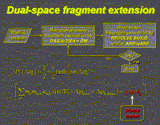
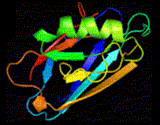
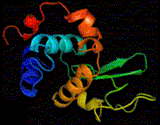
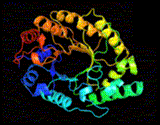
Dual-space fragment extension using SAD data
Extensive case studies have been carried out. Results have been summarized in References.
| Flow chart | Azurin | Lysozyme | Xylanase |
Staged iteration results of the left samples |

|

|

|

|
References:
[1] D.Q. Yao, S. Huang, J.W. Wang, Y.X. Gu, C.D. Zheng & H.F. Fan, N. Watanabe & I. Tanaka,
Acta Cryst. D62, 883-890. (2006)
![]()
[2] N. Watanabe, Y. Kitago, I. Tanaka, J.W. Wang, Y.X. Gu, C.D. Zheng & H.F. Fan,
Acta Cryst. D61, 1533-1540. (2005)
![]()
I. Auto-tuning the error term in direct-method SAD phasing
The probability formula of direct-method SAD phasing used in the program OASIS contains an error term, which is related to the lack-of-closure error. Previously in the error term, there is a constant to be determined empirically for each particular case. It has been found that improper choice of the constant led often to the failure of phase derivation. The problem is resolved by introducing a modified error term and a method of automatically tuning the associated scaling factor.
Electron density maps obtained by a default run of the modified OASIS followed by a default run of DM (Cowtan, K.).
| Cu-SAD | S-SAD | Se-SAD | Br-SAD |
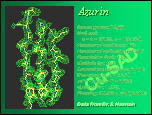
|
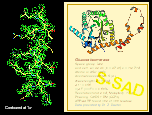
|
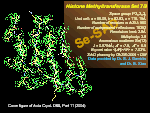
|
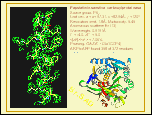
|
II. Direct-method SAD phasing with reciprocal-space fragment extension
Structure fragments obtained from automatic model building based on direct-method SAD phasing are fed back to the direct-method probability formula to strengthen the phasing power and to benefit automation.
| Flowchart | Xylanase synchrotron S-SAD data | ||
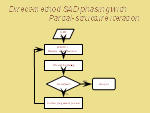
|
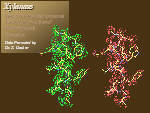
|
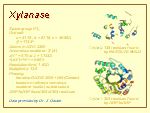
|
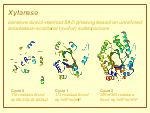
|
| Rusticyanin synchrotron Cu-SAD data | Thaumatin Cr-Ka S-SAD data | ||
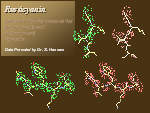
|
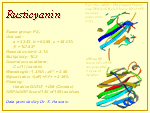
|
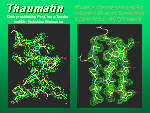
|
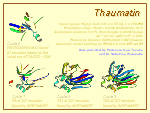
|
References:
[1] J.W. Wang, J.R. Chen, Y.X. Gu, C.D. Zheng, F. Jiang and H.F. Fan,
Acta Cryst. D60, 1987-1990. (2004)
![]()
[2] J.W. Wang, J.R. Chen, Y.X. Gu, C.D. Zheng, and H.F. Fan,
Acta Cryst. D60, 1991-1996. (2004)
![]()
2003
SAD phasing, why direct methods?
SAD phasing is becoming popular in solving protein structures. The essential point to success is to break the phase ambiguity intrinsic in SAD data. Mostly this is done using density-modification techniques. However, density modification does not directly make choice between the two possible SAD phases for each reflection. The use of density-modification techniques alone leads often not to the best results. Two kinds of phase information enable discrimination of phase doublets from SAD data. One is from the heavy atoms (anomalous scatterers), while the other from the phase relationship of direct methods. The former can be expressed by the Sim distribution, while the latter can be expressed by the Cochran distribution. Usually only the Sim distribution is used to yield initial phases for the subsequent density modification. We use instead the product of the Sim and the Cochran distributions to produce initial phases, which have been proved much better than that from only the Sim distribution. Density modification based on such phases has been proved capable of yielding much better results than that based on only the Sim distribution.
Comparison of SAD phasing with and without direct methods
| Phase ambiguity intrinsic in SAD | Phase information available in SAD | Two different kinds of initial SAD phases | Phase probability disributions |
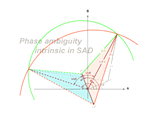
|
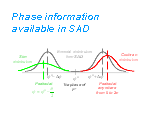
|
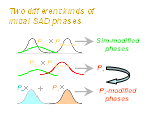
|
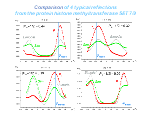
|
| Cumulative phase errors |
HMT SET7/9 | Rusticyanin | Azurin |
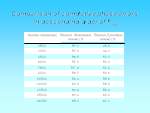
|
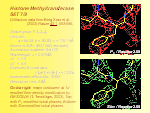
|
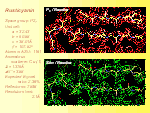
|
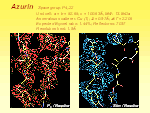
|
Reference:
[1] J.W. Wang, J.R. Chen, Y.X. Gu, C.D. Zheng, F. Jiang, H.F. Fan, T.C. Terwilliger
and Q. Hao, Acta Cryst. D60, 1244-1253. (2004)
![]()